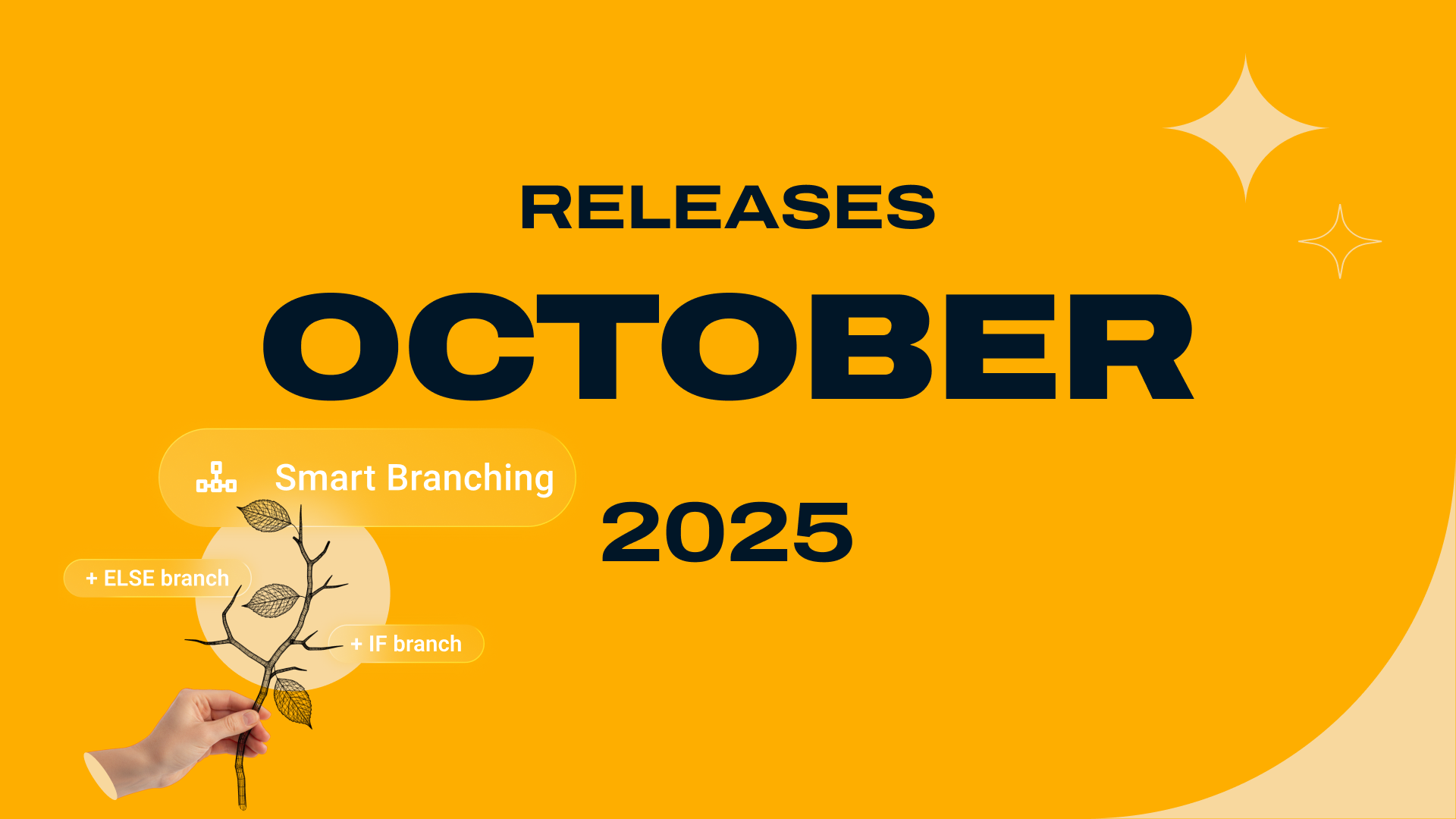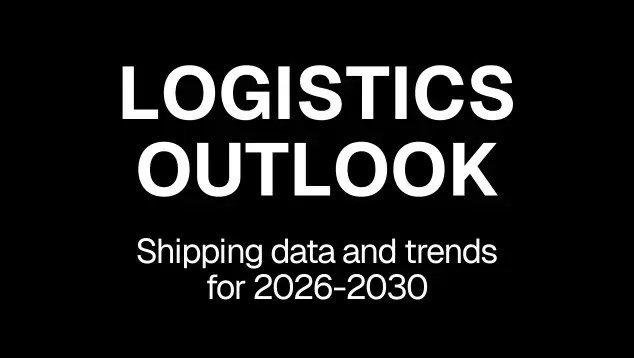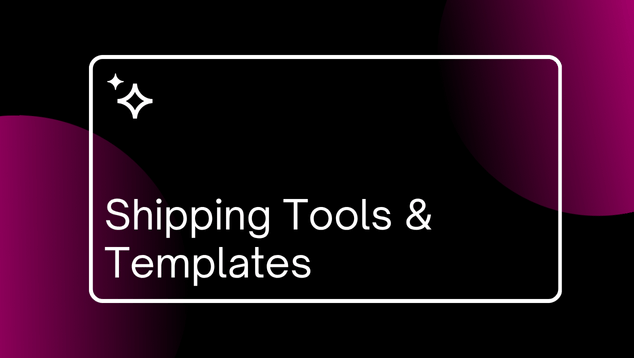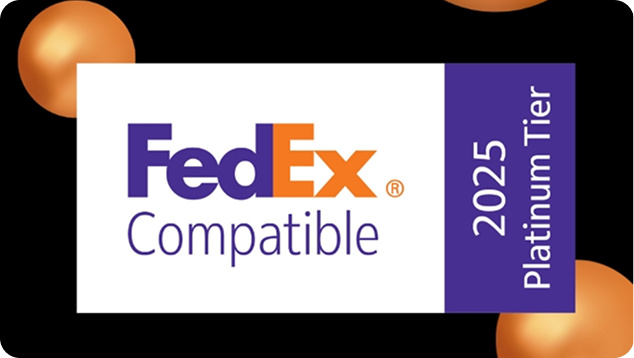How can you avoid stockouts?
 By
Giulia Castagna
·
9 minute read
By
Giulia Castagna
·
9 minute read
Stockouts remain one of the most critical operational risks in logistics, as they simultaneously affect performance indicators, forecasting reliability, and customer relationships.
The challenge is not only to limit occasional unavailability, but to build integrated control that combines analytical methods, organisational processes, and emerging technologies.
This proactive approach turns inventory management into a lever for resilience and sustainable optimisation.
Emerging technologies such as Artificial Intelligence, Machine Learning, and Reinforcement Learning enable dynamic adjustment of replenishment thresholds and prediction of supply disruptions. The multi-echelon approach optimises flows between warehouses and points of sale, reducing costs and stockouts. Combined with a culture of continuous improvement and logistics KPI monitoring, this strategy turns inventory management into a durable competitive advantage for the supply chain.
What is a stockout?
A stockout is when a company cannot fulfil an order because the item is temporarily sold out or unavailable in the warehouse at the required time. This phenomenon is a critical logistics KPI, directly linked to operational performance and customer satisfaction.
One of the most common indicators is the stockout rate, which measures the frequency of unavailability. It can be calculated in several ways, for example:
- Number of SKUs out of stock ÷ total number of active SKUs
- Number of unfulfilled orders ÷ total number of orders placed, expressed as a percentage.
This rate is often compared with the service level (or availability rate): while the latter measures the ability to deliver in full and on time, the stockout rate is its negative mirror — the higher it is, the more service is compromised.
| Indicator | Definition |
|---|---|
| Stockout | Product unavailable at the time of order |
| Stockout rate | Ratio of stockouts (SKUs or orders) expressed as % |
| Service level | Ability to deliver in full and on time (positive KPI) |
| Customer and operational impact | Loss of revenue, dissatisfaction, induced costs |
Why are stockouts so costly?
Financial impacts
Stockouts generate immediate direct costs: first and foremost a loss of revenue, i.e., the gross margin that would have been realised if the sale had been fulfilled. According to specialist financial analyses, these direct costs are the most visible, but indirect costs are often far higher.
In reality, once a customer cannot find the desired product, they may turn to a competitor or abandon the purchase, causing cumulative losses over time. The cost of this loss of trust can be exponential (future revenue loss, win-back campaigns, credibility rebuilding), an impact often underestimated in traditional accounting models.
In B2B contexts—typically stock managers with high rotation—a stockout even on 2% of references (e.g., 200 SKUs out of 10,000 active) can trigger customer disputes, urgent replenishment services, and even contractual penalties depending on SLA clauses. Added to this are urgent logistics costs (express transport, overtime, reshipment…), further complicating cost management.
Customer impact
Customer experience lies at the heart of stockout consequences:
- Immediate dissatisfaction: the customer faces a barrier to ordering, which undermines their sense of the supplier’s reliability.
- Risk of loyalty loss: by some estimates, a customer confronted with a stockout is highly likely not to return—at least in the short term—and long-term loyalty erodes progressively.
- Brand image deterioration: repeated stockouts feed a negative perception—inefficiency, unpredictability, lack of reliability—which can affect brand preference and reduce market share.
- Domino effect in B2B or industry: if stockouts concern essential components in a production process, they may cause line stoppages, financial or operational penalties, or even contract breaches.
Cash tied up and operational disruption
Operationally, stockouts cause internal disruption:
- Impacted cash flow: urgent orders, temporary overstocking to compensate for stockouts, rework—more cash ends up being tied up.
- Indirect logistics costs: extra handling, end-of-day rushes, use of express carriers, mobilisation of internal resources… everything becomes costlier and less efficient.
- Flow fragmentation: linear planning is broken; the warehouse undergoes frequent adjustments; prevention becomes a priority but is resource-intensive in terms of people and organisation.
- Bullwhip effect: isolated stockouts can trigger exaggerated upstream ordering reactions, causing inventory imbalances across the supply chain and a risk of overstock elsewhere.
- Complex KPI control: measuring service level, coverage, stock levels, logistics costs… effective steering becomes difficult without a centralised dashboard.
Frequent sources of stockouts
Insufficient or inaccurate demand forecasting (seasonality, promotions)
One major cause of stockouts lies in the accuracy of demand forecasting. Planning based solely on historical data—without factoring in seasonal variations, promotional peaks, or market trends—inevitably leads to stockouts or costly overstock.
More advanced approaches rely on predictive models integrating historical data, consumer behaviour, and exogenous events. Combined with active monitoring of supplier reliability and market trends, this approach significantly reduces the risk of stockouts.
Supplier failures and logistics delays
Stockouts often stem from weaknesses in the supply chain. This may be due to excessively long delivery times, transport delays, or geopolitical and health-related disruptions.
These events cause cascading effects: longer replenishment lead times, disorganised production schedules, recourse to costlier urgent orders and, in some cases, production line downtime.
Data errors and unsynchronised inventories
Stockouts can also result from internal malfunctions. When an ERP, WMS, or information system is not properly updated, stock data becomes inaccurate. “Perceived” stockouts may then occur: products are physically available but shown as unavailable in the system.
These errors often arise from poorly executed inventories, incomplete stock adjustments, or discrepancies between systems (ERP, WMS, OMS). The direct consequence is a loss of reliability in logistics indicators and more complex operational control.
Advanced technical methods to anticipate and prevent stockouts
Predictive analytics and Artificial Intelligence
Predictive analytics applied to inventory management relies on statistical and algorithmic models capable of identifying hidden trends in historical sales and supply data. Enhanced by Artificial Intelligence (AI) and Machine Learning, these tools can simultaneously take into account multiple factors: seasonality, promotions, consumer behaviour, economic conditions, and external events (weather, strikes, raw-material price fluctuations).
Industry studies show that integrating AI into forecasting can reduce the mean forecast error by 20–30%, directly lowering stockouts and overstock. The ability to simulate multiple scenarios (“what-if analysis”) also enables logistics managers to adapt decisions in real time in the face of demand volatility.
WMS automation, IoT, and robotics
Advanced Warehouse Management Systems (WMS), coupled with the Internet of Things (IoT) and robotics, provide real-time inventory visibility. RFID or IoT sensors offer precise item traceability, limiting human error and accelerating detection of potential stockouts.
In logistics, warehouse-flow robotics help reduce cycle times, improve inventory accuracy, and raise service levels. Automation also makes it possible to trigger alerts when safety stock thresholds are reached, preventing unexpected stockouts.
Inventory coverage calculation and real-time KPI monitoring
Inventory coverage (number of days or weeks of sales covered by available stock) is a key indicator for anticipating stockouts. Real-time monitoring via integrated dashboards helps identify SKUs at risk before stockouts occur.
In practice, it is advisable to track several KPIs simultaneously:
- Service level (ability to deliver in full and on time).
- Stockout rate (proportion of unfulfilled orders).
- Inventory turnover (speed of item renewal).
- Supplier lead time (average time between order and receipt).
Cross-analysing these indicators helps define alert thresholds and optimise the sizing of safety stocks.
Lead Time Calculator
Multi-echelon approach to optimise the end-to-end chain
Multi-echelon optimisation coordinates stock levels across the entire logistics network (production sites, central warehouses, regional depots, points of sale). Unlike a site-by-site approach, it aims to balance flows across the whole supply chain to reduce both costs and stockout risk.
This methodology is based on modelling inter-warehouse flows, identifying bottlenecks, and optimising buffer stock levels. Simulations show this approach can cut overall logistics costs by up to 15% while maintaining or improving service levels.
Lean methods (JIT, Kanban, RFID)
Lean management methods applied to logistics are powerful levers for anticipating and limiting stockouts:
- Just-In-Time (JIT): reduce unnecessary inventory and smooth flows—provided the supply chain is highly reliable.
- Kanban: visual, dynamic flow management that automatically triggers replenishment.
- RFID and related technologies: improve the accuracy and speed of item tracking.
Although these methods require high organisational maturity, their application in advanced logistics environments helps limit stockouts while reducing storage costs.
Organisational and process strategies
ABC classification and prioritised SKU management
The ABC method is an essential analysis tool for ranking items by strategic importance. Inspired by the Pareto principle, it segments items into three categories:
- Class A: ~20% of items accounting for 70–80% of stock value or revenue.
- Class B: ~30% of items generating around 15–20% of value.
- Class C: ~50% of items accounting for only 5–10% of value.
In practice, differentiated management focuses resources and control efforts on high-criticality items (Class A), where stockouts have the greatest financial and operational impact. Less strategic Class C items can follow more flexible stock policies.
Defining safety stock and sizing optimal batches
Safety stock is a buffer intended to absorb uncertainty related to demand or replenishment lead times. Its calculation should factor in:
- Demand variability (sales standard deviation).
- Supplier lead-time reliability.
- Target service level (e.g., 95%, 98%, 99%).
Accurate sizing helps avoid both stockouts and costly overstock. In parallel, calculating the Economic Order Quantity (EOQ) balances ordering and holding costs, ensuring efficient replenishment.
Centralisation vs multi-site management
Organisational stock structure plays a crucial role in preventing stockouts:
- Centralisation: consolidating inventory in a main warehouse, ensuring better visibility and process standardisation.
- Multi-site: distributing stock across several regional warehouses to shorten delivery times and better address local needs.
The choice depends on the distribution network and demand profile. Centralisation favours control and cost reduction, while a multi-site model improves responsiveness but requires advanced synchronisation tools.
Supplier collaboration & Vendor Managed Inventory (VMI)
Collaborative partnerships with suppliers are key to improving supply reliability. VMI (Vendor Managed Inventory) entrusts suppliers with managing the customer’s inventory based on real-time shared indicators.
Benefits include better demand anticipation, shorter replenishment lead times, and optimised stock levels. However, this approach relies on a high level of trust, impeccable data quality, and smooth communication processes.
Team training and a culture of continuous improvement
Tools and technical methods lose effectiveness without an appropriate organisational culture. Regularly training teams in inventory management best practice (stocktaking, setting thresholds, mastering indicators) is critical.
Moreover, adopting a continuous improvement approach (lean, kaizen, six sigma) helps detect anomalies, optimise processes, and strengthen the overall resilience of the supply chain. In complex environments, human capability remains the first line of defence against stockouts.
Advanced cases and emerging technologies
Reinforcement Learning to adjust safety stock
Reinforcement Learning (RL), a branch of AI, is increasingly powerful for optimising safety stock management. Unlike classical approaches that rely on deterministic formulae (demand standard deviation, supplier lead times, target service level), RL learns continuously from outcomes.
The principle is based on agents that test different replenishment strategies in a simulated environment. Each decision (reorder earlier, delay an order, increase buffer stock) is evaluated against a reward—for example, reducing stockouts or minimising holding costs. Over time, the algorithm adjusts its parameters to converge on an optimal policy.
Predictive models to anticipate supply disruptions
Supply chain resilience now depends on the ability to anticipate disruptions: transport delays, raw-material fluctuations, health crises, or geopolitical tensions. Modern predictive models go beyond simple demand forecasting: they aim to identify early weak signals of disruption.
These models rely on:
- Advanced time-series analysis (ARIMA, SARIMAX, Prophet).
- Supervised machine learning models (random forests, gradient boosting) to detect influential variables.
- Deep learning techniques (LSTM networks, transformers) capable of capturing complex dependencies in large, unstructured data.
For example, by integrating exogenous data such as logistics indices, weather conditions, energy prices, or market information, it becomes possible to forecast not only demand but also the risk of supply disruption.
Conclusion and recommendations
Preventing stockouts can no longer be seen as a simple inventory-tracking function. It is now a strategic priority, at the intersection of customer satisfaction, financial performance, and operational resilience.
The points developed in this analysis highlight three major levers:
-
Forecast accuracy: integrate advanced methods (predictive analytics, machine learning, forward-looking scenarios) to reduce uncertainty and anticipate demand.
-
Organisational optimisation: structure inventory management with differentiated approaches (ABC, EOQ), strengthen supplier collaboration, and strike the right balance between centralisation and local agility.
-
Technological innovation: leverage automation, real-time KPIs, IoT, and—over time—emerging technologies such as Reinforcement Learning to adjust safety parameters dynamically.
For an experienced Logistics Manager, the goal is no longer simply to reduce the occasional stockout rate, but to build a robust, agile system capable of absorbing disruptions while optimising costs. This entails:
- Systematic steering via key indicators (service level, stock coverage, supplier lead times).
- Deploying dynamic dashboards to enable early anomaly detection.
- Fostering an internal culture of continuous improvement, with trained and empowered teams.
- Progressive integration of analytical and predictive solutions that turn the supply chain into a true competitive advantage.
Find out more
Technical FAQ on stockouts
How do you calculate optimal safety stock?
Safety stock calculation is based on three main parameters: demand variability (standard deviation of historical sales), supplier lead-time variability, and the target service level (often 95% to 99%).
Common formula:
SS = z × σd × √Lwhere z is the coefficient associated with the desired service level (e.g., 1.65 for 95%), σd is the standard deviation of daily demand, and L is the replenishment lead time. A dynamic adjustment is recommended (periodic recalculation as data evolves).
Which KPIs should be tracked to measure stockout prevention effectiveness?
- Service level: share of orders delivered in full and on time.
- Stockout rate: unavailable references ÷ active references.
- Inventory coverage: days/weeks of sales covered by stock.
- Inventory turnover: speed of item renewal.
- OTIF (On Time In Full): punctuality × completeness of deliveries.
Cross-tracking these KPIs via an integrated dashboard helps detect weak signals before a stockout occurs.
When should you opt for a WMS or robotic automation?
Moving to an advanced WMS or automation becomes relevant when:
- the number of SKUs runs into the several thousands;
- flows are complex or multi-site;
- inventory discrepancies exceed a critical threshold (e.g., > 2%).
Automation (picking robots, smart conveyors, IoT sensors) is particularly effective in high-rotation environments where accuracy and cadence determine the service level.
How do you balance storage costs and service continuity?
The balance relies on the economic stock optimum, factoring in:
- Holding cost (financial tie-up, storage space);
- Ordering cost (administrative, logistics, procurement);
- Stockout cost (lost revenue, dissatisfaction, contractual penalties).
Models (EOQ, Monte Carlo simulation, multi-echelon optimisation) help identify the stock level offering the best cost/service trade-off.
What role will AI and Reinforcement Learning play over the next few years?
Predictive AI already improves forecast reliability and reduces planning errors. Reinforcement Learning, still emerging, is moving towards adaptive control: real-time adjustment of safety stock, reorder thresholds, and SKU prioritisation.
Over a 3–5 year horizon, integration with WMS/ERP could bring self-learning, self-optimising systems, significantly reducing stockouts while containing overall costs.

Curious by nature, analytical by mindset, Giulia Castagna is the voice behind ShippyPro’s content. As Content Marketing Manager, she simplifies complex logistics topics for those who ship around the world every day. She writes about AI, automation, and shipping trends to inspire data-driven decisions.













